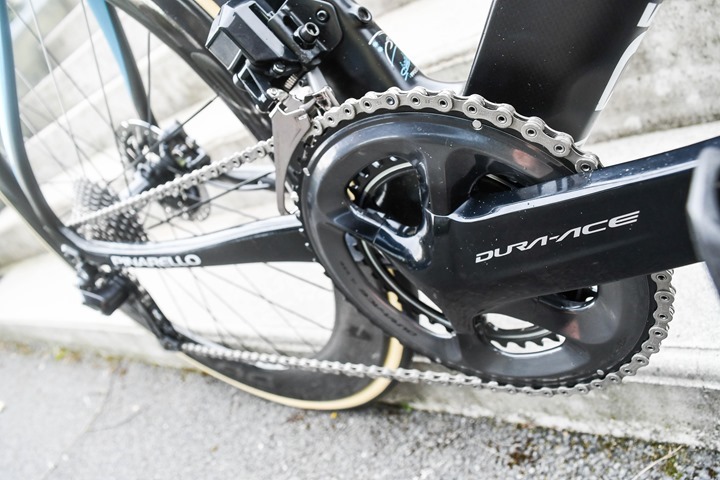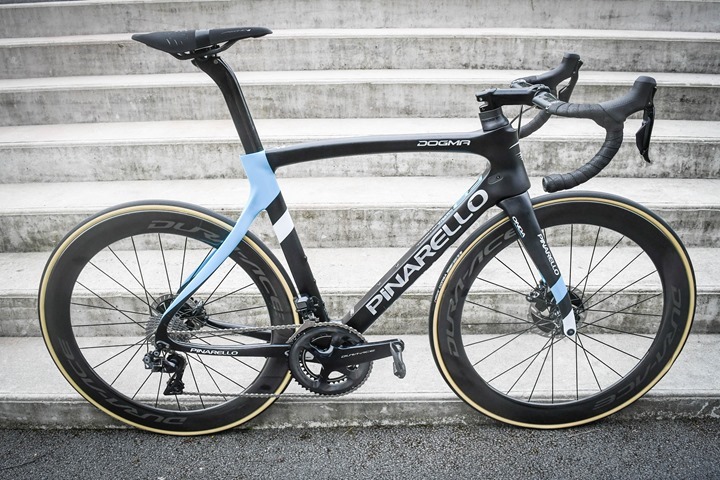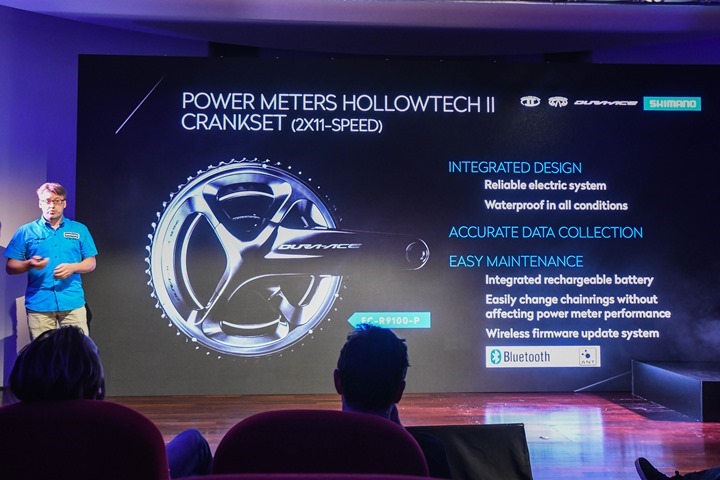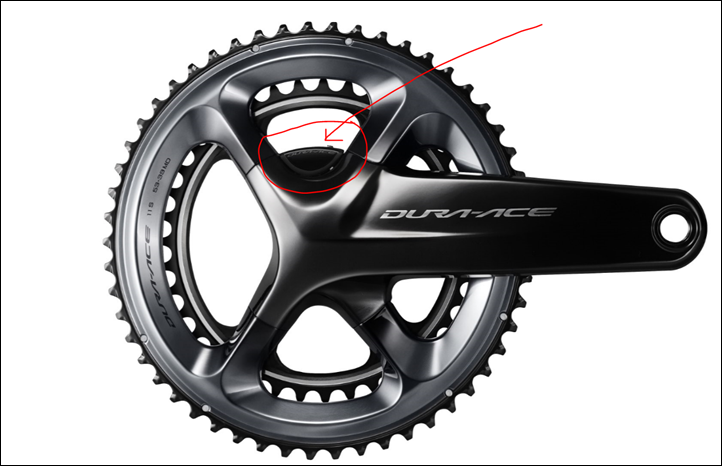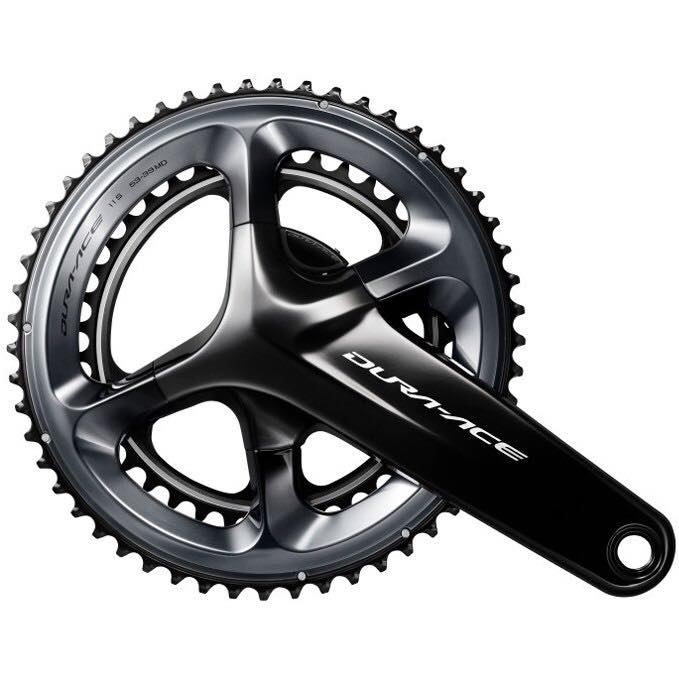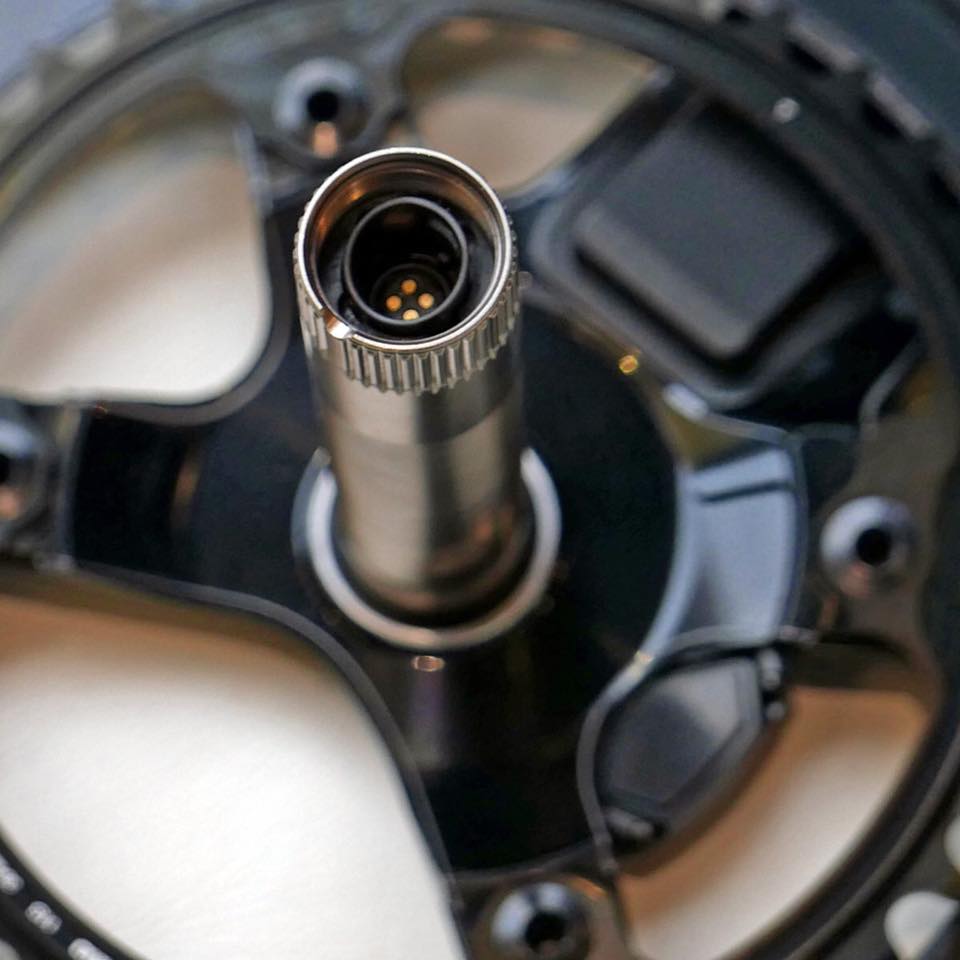Today, every power meter company in the industry just breathed a huge collective sigh of relief: Shimano did not ultimately decide to baseline their long rumored integrated power meter as part of the Dura-Ace standard offering. Instead, they made it optional at an (unknown) higher price point.
But that doesn’t mean these companies can rest on their laurels – far from it.
However, let’s not get too far ahead of ourselves on today’s announcements. After all, there’s plenty of interesting news within today’s Shimano announcements. These announcements centered on the new Dura-Ace R9100 platform. It’s been three years since the last Dura-Ace product range, the R9000 (and 7 years since Di2’s introduction in the 7900 platform). Shimano noted the stability of these release cycle timeframes.
The R9100 platform is vast – it covers everything from shifting to brake systems, drivetrains to wheels, and pedals to power meters. I’m going to largely focus on pieces that are electronic (gadgety) in nature, but will include notables on other components as it makes sense.
WHAT’S BEEN INTRODUCED:
The entire new platform is known as the Dura-Ace R9100 – which covers all of the aforementioned categories. Within that there are numerous different new hardware (and software) components, which is best summarized as:
– New shifting components
– New braking components
– New wheel (rims)
– New drivetrain components
– New Di2 E-Tube components
– New smartphone apps for consumer E-Tube
– New tablet apps for bike shops/OEM’s for E-Tube
– New shifting modes for Di2 in triathlon/TT configurations
– New power meter integrated into/as R9100P
Remember that Shimano basically categorizes their group sets into three chunks: Dura-Ace (highest), Ultegra (mid-range), and 105 (low-end). All of today’s announcements purely focus on the Dura-Ace range. There were no announcements related to the other two product ranges.
Now at the base level, there are really two specific naming conventions here to be mindful of: The R9100 and the R9100-P. The difference? The R9100-P has a power meter integrated, with the ‘P’ standing for power meter (not Pokémon or Pickles).
Because my blog is largely focused on the gadget side of the house, I’m going to mostly ignore the new wheels/brakes/shifters, and instead focus on the power meter and Di2 side of things.
FC-R9100-P POWER METER DETAILS:
So how is the FC-R9100-P different? Well, in many ways it’s not much different from what’s on the market. The only true difference is that Shimano’s making an integrated purchasing option. Which is basically what SRAM does with their Quarq lineup, except that Shimano merely makes it a single letter difference when purchasing R9100 vs R9100-P.
However, while the end results are quite similar – the paths the companies take in technology to get there are quite different. Let’s start with the baseline specs:
– Dual Sensing Left-Right system (individual sensor per arm)
– ANT+ Broadcasting of Power: Power, Cadence, Left/Right balance
– Does NOT transmit Bluetooth Smart power meter metrics
– Bluetooth Smart for firmware updates and app configuration
– Re-chargeable battery (rated at 300 hours), uses wireless charging system
– Claimed accuracy of +/- 2% (inline with others in the industry)
– Can change chainrings without impacting accuracy (or requiring factory servicing)
– Expected added weight of 60-70g
The rechargeable battery choice will be rather interesting. While there are upcoming entrants into the market with a rechargeable option (i.e. WatTeam), all other companies are using some variant of coin cell batteries. Even SRM toyed with the idea of a rechargeable unit for the past few years (going as far as formally announcing it), but ultimately decided to defer the project and re-focus efforts elsewhere. In Shimano’s case, the battery is wired between the left and right side, using a battery pod located within the spindle. That same wiring also provides communication between the two sides of the unit.
The side of the power meter includes a small status LED for validating enablement, battery and calibration status, as well as a button that can be used to both turn on the system as well as calibrate it. Just like Di2 the battery states are indicated by the colors of the LED (i.e. solid green is greater than 50%).
Shimano recommends calibrating the unit prior to every ride, to account for environmental changes (pressure/temperature). To do so you’ve got two options: You can either hold the button on the side of the unit until it flashes blue, which will trigger calibration when in a neutral position. Alternatively, after powering on if you’ve got a head unit capable of sending a calibration command (that’s basically all of them), you can do that as well.
The R9100-P will be available in the following crank-arm lengths:
– 170, 172.5, 175mm (with chainrings)
– 165, 167.5, 170, 172.5, 175, 177.5, 180mm (w/o chainrings)
And it will be available in the following gear combinations (2×11): 50-34T, 52-36T, 53-39T
When asked whether they developed their own power meter tech, or licensed it from another player in the industry they confirmed it’s their own technology. They noted it’s the same technology used in their bike fitting platform. They would not disclose how many strain gauges are used in the R9100-P, nor the arrangement of those gauges.
Next you’ll remember that the unit does include Bluetooth Smart capabilities, but only for firmware updates. The company says that they are considering adding in Bluetooth Smart power broadcasting down the road – but there’s no firm plans for doing that. If they did so, they noted it would be via firmware update, as the hardware does support it.
There are pieces that haven’t been released yet, notably being: Price
Also, somewhat oddly, they didn’t have any R9100-P’s on site at the launch event. Nuttin. Just a photo showing the tiny pod inset into the crank spider area:
Now the integrated power meter presents a bit of an interesting dynamic for some pro teams – most notably Team Sky, which has an existing power meter partnership with Stages Power. However, in discussions with Shimano – despite working with Team Sky, FDJ, and Team Lotto-NL Jumbo, only FDJ plans to use the integrated power meter option. They’ve been doing so since earlier this year, and plan to continue through the Tour de France.
Note however that at this time Shimano doesn’t have any R9100-P units per se. Instead, they’ve been doing all testing on older 9000 series crank-arms with pods attached to them. All R9100-P’s that you see are merely plastic mock-ups without functional components inside them.
By dcrainmaker.com






